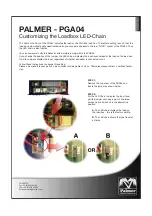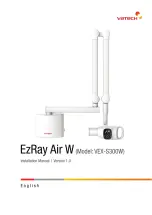
IACER Srl
13
MNPG117-02
How to use
Contraindications
Do not use I-TECH UT2 if the source of the pain is unknown or not diagnosed.
Use the device ONLY after having a diagnosis.
It is absolutely forbidden to use I-TECH UT2 in those areas affected by
thrombophlebitis not to make the thrombus move. Avoid treating patients
with deep vein thrombosis, embolism or arteriosclerosis or that have
previously been treated with X rays or other radiations. This device should not
be used near testicles or over neoplastic lesions, on the carcinogenic areas and
over a healing fracture. Do not use ultrasounds on the stellate ganglion, on the
spinal column after a laminectomy, on the area surrounding the main nerves
or the cranium, over cardiac area and in anesthetized areas or in patients with
bleeding problems. This device should not be used on ischemic tissues in
individuals with vascular disease where the blood supply would be unable to
follow the increase in metabolic demand and tissue necrosis might result. This
device should not be used over the thoracic area if the patient is using a cardiac
pacemaker in order to avoid interferences between the ultrasound device and
the pacemaker.
Avoid using ultrasounds near bone growth centers in kids/growing children.
Ultrasound therapy must not be performed near the uterus on pregnant
women or those who suspect they might be pregnant. Therefore, the
ultrasound beam should not be used in this area without ensuring that the
patient is not pregnant.
Side effects
If the handpiece moves too slowly the patient may experience sharp and/or
deep peripheral pain. If it moves too quickly, or if the handpiece is not held
correctly, the therapeutic effects of the ultrasound might be reduced.
Some patients might be particularly sensitive to ultrasound and might
therefore experience undesired reactions such as hot flushes in the treated
area. Check the treated area before, during and after the treatment and
suspend it in case of undesired effects.
Make sure that the handpiece is in contact with the skin using a specific
ultrasound gel. Any substance used for this purpose must be highly conductive.
Air is a terrible conductor of ultrasound waves.
Patients with arterial or venous thrombosis or thrombophlebitis are at risk of
developing embolisms when electrical stimulation is applied over or adjacent
to the vessels containing the thrombus.














































